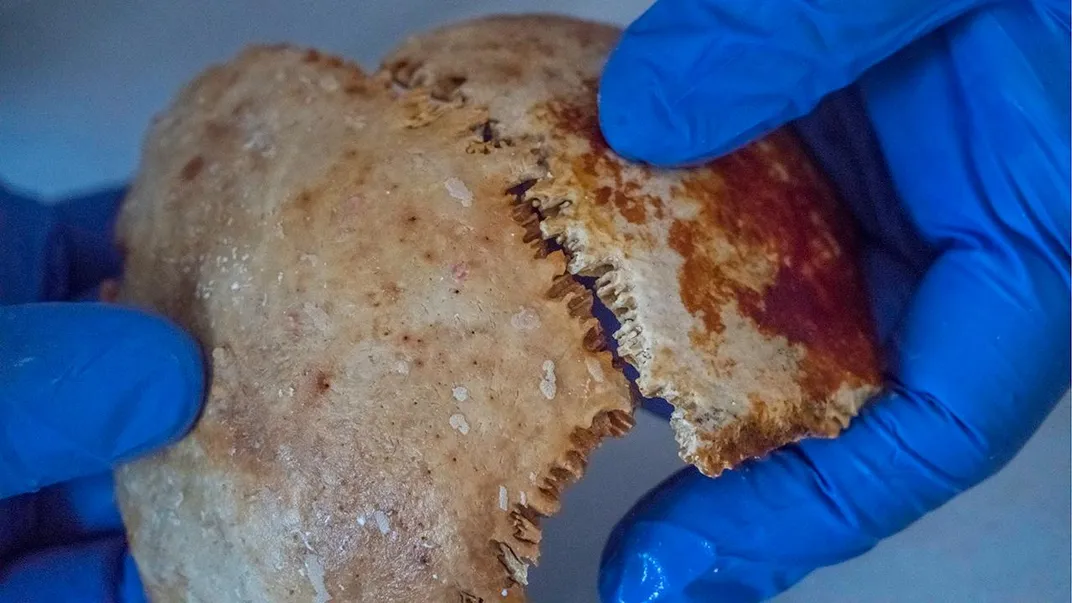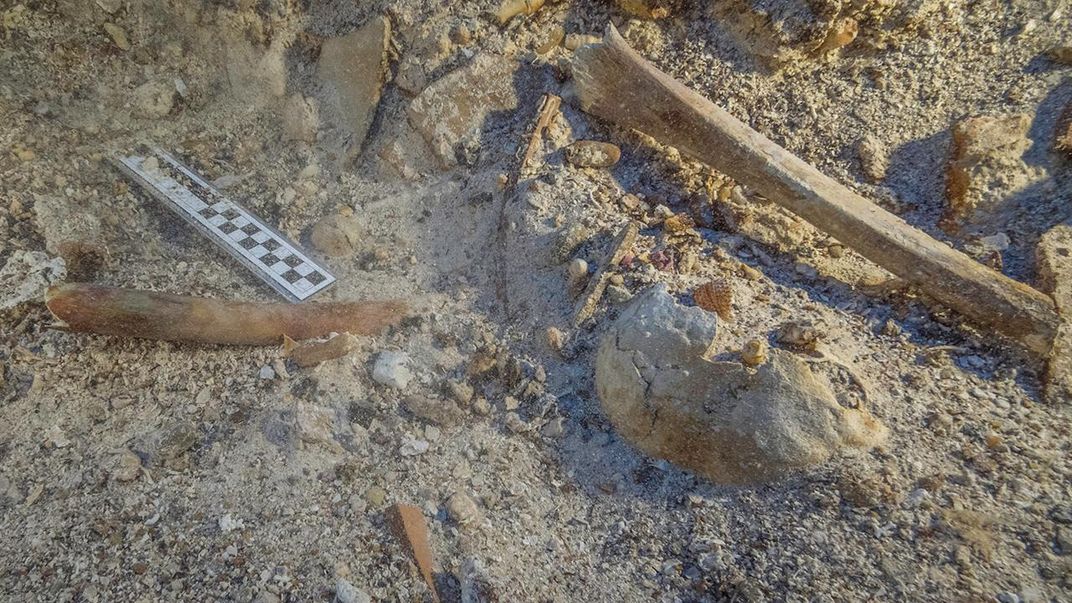Skeleton Pulled From the Antikythera Shipwreck Could Give Clues to Life Aboard the Vessel
Archaeologists hope to analyze DNA taken from a skeleton found among the wreckage
/https://tf-cmsv2-smithsonianmag-media.s3.amazonaws.com/filer/62/82/6282bf8e-e628-4a97-8adc-df1f639f6a95/anti-duw-160900-146_1280_439173.jpg)
For years, a famous shipwreck off the coast of the Mediterranean island of Antikythera has provided archaeologists with all manner of artifacts, from statues to the ever-puzzling clock-like mechanism. The ship's remains were discovered by Greek sponge divers back in 1900 and has yielded an impressive stream of treasures. The latest recovery from the ship: a human skeleton. And archaeologists are hoping to analyze its DNA to gain insight into the passengers aboard this ship of treasure.
On August 31, researchers diving in the wreck uncovered several bones from the remains of a skeleton buried in the seafloor under more than a foot of pottery shards. Since its discovery, they have retrieved a skull, part of a jaw with teeth, and bones from the arms, ribs and legs, Olivia Quintana reports for the Boston Globe. Even more of the skeleton remains buried, yet to be excavated.
“This is the most exciting scientific discovery we’ve made here,” WHOI researcher Brendan Foley tells Ian Sample for The Guardian. “We think he was trapped in the ship when it went down and he must have been buried very rapidly or the bones would have gone by now.”

The shipwreck is perhaps best-known for the discovery of the so-called “Antikythera mechanism,” a remarkably intricate clockwork device that researchers believe ancient Greek sailors used to model the movements of the moon and sun. But it is far from the only artifact retrieved from the wreckage, Jo Marchant reports for Nature News. For more than a century, researchers have trawled the remains of the long-sunken merchant ship for items that could reveal new information about life in ancient Greece and the other cultures of the Mediterranean.
This latest find, however, is particularly special. While researchers frequently find goods like pottery, coins and other antiquities aboard shipwrecks, finding human remains preserved underwater for so long is remarkable and requires very specific conditions to occur, Marchant reports. Most times, the bodies of shipwrecked sailors are washed away by currents or eaten by fish. While bones have been retrieved from more recent shipwrecks, dating back to the 16th and 17th centuries, only a handful of human remains have ever been found in ancient shipwrecks.
"Against all odds, the bones survived over 2,000 years at the bottom of the sea and they appear to be in fairly good condition, which is incredible," Hannes Schroeder, a DNA researcher with the Natural History Museum of Denmark in Copenhagen, says in a statement.

Human remains were previously discovered in the wreckage back in 1976, but this is the first time bones have been found in the shipwreck since DNA testing technology was developed and refined. The researchers are now hoping to get permission from the Greek government to transfer the bones to Schroeder’s lab in Denmark, Sample reports. While it’s unclear whether the remains contain any DNA intact enough to analyze, the DNA could yield a wealth of information about the long-dead sailor, including sex, age, ethnicity and even appearance.
“Human remains have started to become a source of information that can tell us incredible things about the past,” Schroeder tells Sample. “Even with a single individual, it gives us a potentially great insight into the crew. Where did they come from? Who were these people?”